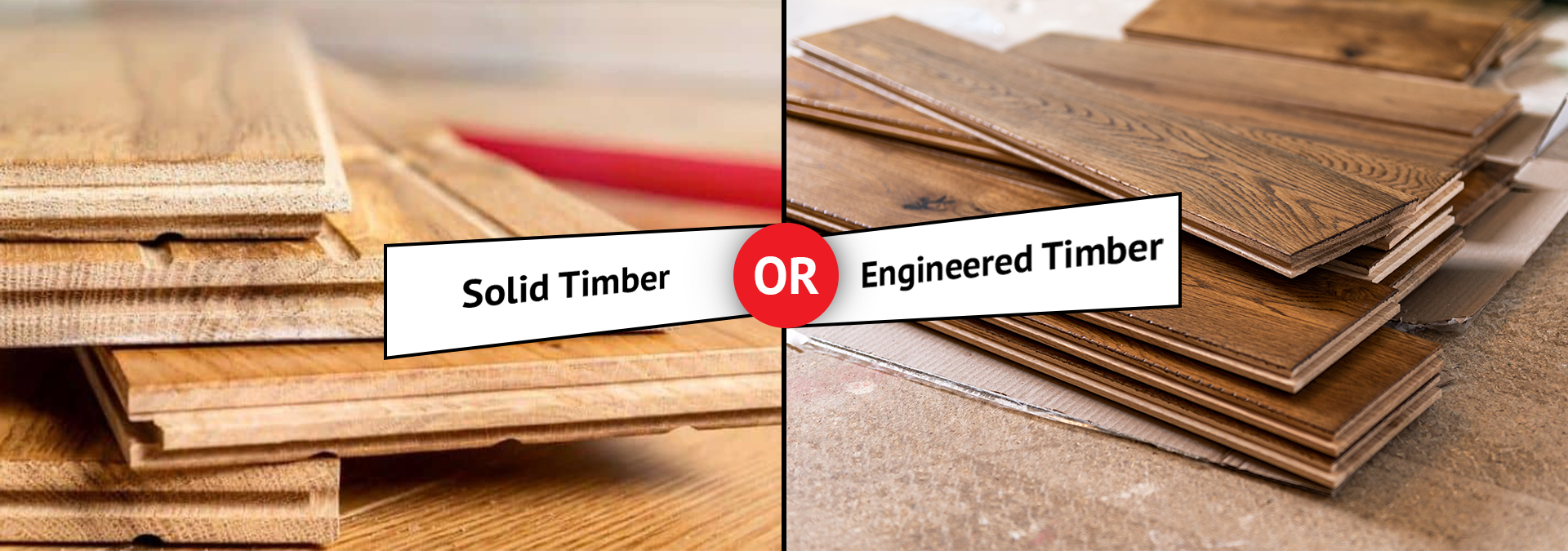Het verkrijgen van massief hout en bewerkte houten vloeren in China: een introductie
Het selecteren van het ideale vloermateriaal fvoor uw hotel of restaurant is een cruciale beslissing die de esthetiek, duurzaamheid, en het onderhoud van uw ruimte aanzienlijk beïnvloedt. Houten vloeren, geprezen om hun tijdloze charme en natuurlijke aantrekkingskracht, zijn een steeds populairdere keuze geworden in commerciële omgevingen. De veelzijdigheid ervan maakt het mogelijk om verschillende ontwerpstijlen aan te vullen, van klassiek tot hedendaags, waardoor het een uitstekende optie is voor het creëren van een gastvrije en elegante sfeer. De beslissing tussen massief hout en bewerkte houten vloeren kan echter een uitdaging zijn, vooral bij het navigeren door de diverse en uitgebreide markt van vloerenleveranciers in China.
Massief houten vloeren zijn gemaakt van één stuk natuurlijk hout en bieden een rijke, authentieke uitstraling die de algehele ambiance van een kamer verbetert. Massief hout staat bekend om zijn uitzonderlijke duurzaamheid en kan meerdere keren worden geschuurd en opnieuw worden afgewerkt, waardoor het zijn uiterlijk tientallen jaren kan behouden. Het vereist echter zorgvuldige overweging met betrekking tot vocht- en temperatuurschommelingen, die na verloop van tijd kromtrekken of krimpen kunnen veroorzaken. Technisch houten vloeren bestaan daarentegen uit een echt houtfineer dat is gelaagd over een multiplex of een basis van vezelplaat met hoge dichtheid. Deze constructie biedt een grotere stabiliteit en weerstand tegen vochtigheid en temperatuurveranderingen, waardoor het een ideale keuze is voor gebieden met veel verkeer of omgevingen die gevoelig zijn voor vocht.
Bij het sourcen van houten vloeren in China is het essentieel om deze verschillen te begrijpen om een weloverwogen keuze te maken die aansluit bij de specifieke behoeften van uw project. Het land biedt een breed scala aan hoogwaardige opties, van premium massief hout tot kosteneffectieve ontworpen varianten, die aansluiten op uiteenlopende budgetten en ontwerpvoorkeuren. Deze gids onderzoekt deze vloertypen diepgaand en biedt waardevolle inzichten in hun unieke kenmerken en voordelen. Door de nuances van het sourcen in China te begrijpen, kunt u effectief door de markt navigeren en een vloeroplossing selecteren die de schoonheid en functionaliteit van uw hotel of restaurant verbetert, waardoor een blijvende indruk op uw gasten wordt gemaakt.
Begrijpen van houten vloeren
1.1 Massief houten vloeren: Massief houten vloeren, de traditionele keuze voor houten vloeren, zijn volledig vervaardigd uit één stuk hardhout, zoals esdoorn, eik, kers of walnoot. Meestal worden deze planken in hun ruwe vorm geïnstalleerd, waarbij ze na installatie moeten worden geschuurd en gepolijst om hun natuurlijke glans te onthullen. Het grootste voordeel van massief hout is de duurzaamheid ervan: het oppervlak kan meerdere keren worden geschuurd en opnieuw worden afgewerkt, wat de levensduur aanzienlijk kan verlengen. Dit maakt het een ideale keuze voor gebieden met veel verkeer waar duurzaamheid van het grootste belang is. Bovendien geven de unieke nerfpatronen en kleuren van natuurlijk hout elke plank een onderscheidende uitstraling, wat bijdraagt aan het algehele karakter van de vloer.
1.2 Engineered Timber Flooring: Engineered Timber Flooring biedt dezelfde visuele aantrekkingskracht als massief hout, maar met een meer kosteneffectieve en technologisch geavanceerde aanpak. Het bestaat uit een dunne laag echt houtfineer (meestal 1 mm tot 4 mm dik) dat is bevestigd aan een meerlaags substraat van multiplex, high-density fiberboard (HDF) of grenenhout. Deze gelaagde constructie verbetert de stabiliteit en minimaliseert de natuurlijke krimp en uitzetting die gepaard gaan met massief hout, waardoor het geschikter is voor omgevingen met wisselende temperaturen of vochtigheidsniveaus. Engineered Timber-platen zijn vaak voorgefinisht, waardoor er na installatie geen uitgebreid schuren en polijsten nodig is, wat zowel tijd als arbeidskosten bespaart.

Massief hout versus samengestelde houten vloeren
2.1 Uiterlijk: Zowel massief als bewerkt hout biedt de warmte en het karakter van natuurlijk hout. Massief hardhouten vloeren, verkrijgbaar in zowel onafgewerkte als voorgefinishte opties, hebben een bredere variëteit aan soorten, kleuren en texturen, wat meer ontwerpflexibiliteit biedt. Hoewel bewerkt hout het uiterlijk van massief hout nabootst, kan het enigszins variëren vanwege de meerlaagse constructie. De bovenste fineerlaag bepaalt het uiterlijk, wat betekent dat de keuze van houtsoorten nog steeds een cruciale rol speelt in esthetiek.
2.2 Hitte- en waterbestendigheid: Hoewel noch massief noch bewerkt hout ideaal is voor gebieden met een hoge vochtigheid, biedt bewerkt hout een betere weerstand tegen vochtigheid dankzij de multiplex- of HDF-basis, die kromtrekken en opzwellen helpt voorkomen. Dit maakt het een voorkeurskeuze voor installaties op betonnen ondervloeren of in gebieden met een hoge vochtigheid. Massief hout kan daarentegen kromtrekken of uitzetten bij overmatige vochtigheid en is minder stabiel in wisselende klimaten.
2.3 Onderhoud en reiniging: Massief houten vloeren zijn relatief eenvoudig te reinigen en onderhouden, met regelmatig vegen en stofzuigen als voldoende voor dagelijks onderhoud. Speciale reinigingsoplossingen voor hout kunnen vlekken verwijderen en het uiterlijk ervan opfrissen. Het vermogen om massief hout meerdere keren te schuren en te polijsten is een aanzienlijk voordeel, waardoor het zelfs na jaren van slijtage in de oorspronkelijke staat kan worden hersteld. Technisch hout is ook gemakkelijk te reinigen, maar heeft een beperktere schuurcapaciteit vanwege het dunne topfineer. Dit beperkt de mogelijkheid om te worden hersteld in vergelijking met massief hout, maar biedt nog steeds een redelijke levensduur met de juiste verzorging.
2.4 Levensduur: Massief hardhouten vloeren staan bekend om hun lange levensduur, met een potentiële levensduur variërend van 30 tot 100 jaar, afhankelijk van de houtsoort en het niveau van onderhoud. Technisch hout, met een typische levensduur van maximaal 30 jaar, is minder duurzaam in vergelijking, maar biedt nog steeds een langdurige oplossing voor commerciële ruimtes, met name waar kosten of omgevingsomstandigheden een probleem zijn.
2.5 Kosten : Kosten zijn een kritische factor bij het kiezen tussen massief en bewerkt hout. Massief hout is over het algemeen duurder vanwege het gebruik van puur hardhout en het arbeidsintensieve installatieproces. Bewerkt hout, dat een vergelijkbare esthetiek biedt tegen lagere kosten, is vaak een budgetvriendelijkere optie. Dit maakt het een aantrekkelijke keuze voor projecten waarbij esthetiek belangrijk is, maar er budgetbeperkingen zijn.
2.6 Installatie: Het installatieproces verschilt aanzienlijk tussen de twee soorten vloeren. Massief houten vloeren worden traditioneel geïnstalleerd met behulp van tong-en-groefplanken of direct op de ondervloer genageld, wat arbeidsintensief kan zijn en vakmanschap vereist. Houten plinten worden vaak langs de basis van muren toegevoegd om een schone, afgewerkte rand te creëren en uitzettingsvoegen te bedekken. Daarentegen heeft bewerkt hout vaak een klik-en-vergrendelingssysteem dat de installatie vereenvoudigt en zwevend over een ondervloer kan worden gelegd, wat zowel tijd als arbeidskosten bespaart. Sommige bewerkte opties vereisen mogelijk nog steeds spijkeren, met name in gebieden met veel verkeer.
2.7 Maat: Massief houten planken zijn doorgaans verkrijgbaar in standaardmaten, zoals 2¼ inch breed, ¾ inch dik en lengtes variërend van 12 tot 84 inch. Geconstrueerde houten planken zijn over het algemeen dunner, variërend van 3/8 tot 9/16 inch dik, en kunnen breder zijn, tot wel zeven inch. Ze bieden ook meer gevarieerde lengtes, van 12 tot 60 inch, wat extra flexibiliteit biedt voor installatie in verschillende kamergroottes en -configuraties.
2.8 Hardheid: Zowel massief als bewerkt hout is verkrijgbaar in verschillende hardheidsniveaus, afhankelijk van de gebruikte houtsoort. Hardheid heeft invloed op de duurzaamheid, waarbij hardere houtsoorten beter bestand zijn tegen deuken en slijtage. Bewerkt hout kan verschillende kernmaterialen bevatten, zoals HDF, dat dichter en robuuster is dan MDF (Medium-Density Fiberboard), wat zorgt voor extra duurzaamheid en stabiliteit.
Conclusie
Concluderend komt de keuze tussen massief hout en bewerkte houten vloeren uiteindelijk neer op persoonlijke voorkeuren, budgetoverwegingen en uw specifieke projectvereisten. Beide opties bieden een verbluffende visuele aantrekkingskracht, eenvoudig onderhoud en een breed scala aan stijlen en afwerkingen.
Of u nu kiest voor de blijvende charme van massief hout of de kosteneffectieve elegantie van bewerkt hout, uw keuze voor een houten vloer is een bewijs van uw toewijding aan tijdloze schoonheid en blijvende kwaliteit. Nu u een uitgebreid begrip hebt van deze vloeropties, kunt u vol vertrouwen de juiste beslissing nemen voor uw hotel- of restaurantproject.
Het verkrijgen van houten vloermaterialen in China
Het kiezen van de juiste houten vloer voor uw hotel of restaurant houdt in dat u persoonlijke voorkeuren, budgetoverwegingen en specifieke projectvereisten in evenwicht moet brengen. Massief hout en bewerkt hout zijn twee veelzijdige vloeropties die een verbluffende visuele aantrekkingskracht, onderhoudsgemak en een breed scala aan stijlen en afwerkingen bieden die geschikt zijn voor commerciële ruimtes. Massief hout, vervaardigd uit één stuk hout, biedt ongeëvenaarde duurzaamheid en de mogelijkheid om meerdere keren te worden afgewerkt, waardoor het een uitstekende investering op de lange termijn is. Het kan echter zorgvuldig onderhoud vereisen om het te beschermen tegen vocht en temperatuurschommelingen. Aan de andere kant biedt bewerkt hout, vervaardigd met een echt houtfineer over een multiplex basis, een kosteneffectieve installatie en superieure stabiliteit in vochtgevoelige omgevingen, wat een praktische oplossing biedt voor gebieden met veel verkeer.
Zowel massief als bewerkt hout hebben hun unieke voordelen die inspelen op verschillende projectbehoeften. Massief hout is ideaal voor ruimtes waar een klassieke, rijke uitstraling gewenst is en waar de vloer minder snel wordt blootgesteld aan vocht. Het voegt aanzienlijke waarde toe aan elk pand en kan worden opgeknapt door te schuren en opnieuw af te werken. Ondertussen biedt bewerkt hout flexibiliteit in ontwerp en installatie, met als bijkomend voordeel dat het beter bestand is tegen veranderingen in vochtigheid en temperatuur. Dit maakt het een geweldige keuze voor gebieden waar klimaatbeheersing een probleem is of waar vloeren frequent worden gebruikt en mogelijk worden blootgesteld aan vocht.
Uiteindelijk, of u nu kiest voor de blijvende charme van massief hout of de praktische elegantie van bewerkt hout, uw keuze zal een toewijding aan uitstekende kwaliteit en esthetische aantrekkingskracht weerspiegelen. Met een grondig begrip van deze opties en hun respectievelijke voordelen, kunt u een weloverwogen beslissing nemen die het algehele ontwerp, comfort en functionaliteit van uw hotel of restaurant verbetert. Door houten vloermaterialen in China te sourcen, heeft u toegang tot een breed scala aan keuzes die uitstekende kwaliteit van vakmanschap combineren met concurrerende prijzen, wat zorgt voor een vloeroplossing die perfect aansluit bij de unieke behoeften van uw project.
Voor meer vloeropties kunt u ook onze blogpost lezen over het kiezen van de juiste vloer bij het sourcen uit China: tegels versus SPC-vloeren. Het biedt een gedetailleerde vergelijking om u te helpen een weloverwogen beslissing te nemen.






